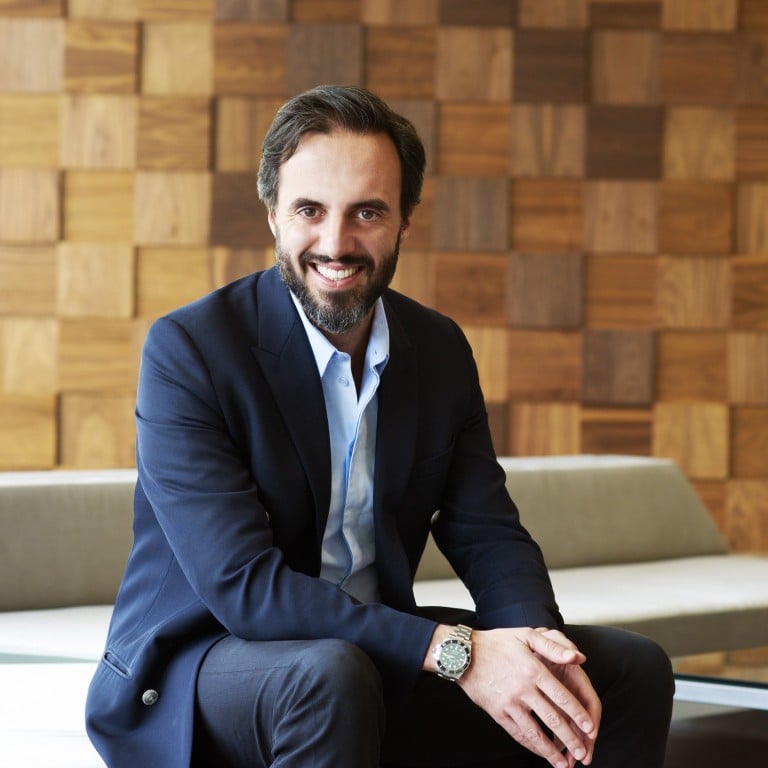What does Farfetch CEO José Neves have up his sleeves?

The latest instalment in our series with luxury CEOs. This month: José Neves, CEO of Farfetch
Job experience:
2007-present: CEO of Farfetch
2006-2007: shoe designer at B Store
Q. You’ve just made the company public. Are there any differences before and after the IPO?
A. It’s only been a few months and I’m loving it. I learned a lot through the process of making the company public. It’s definitely the best step for Farfetch. Although many fashion groups like Kering and Chanel are investors, our management remains independent and neutral because we’re a platform for the entire industry. Being a public company [offers] even more transparency.
Q. What’s your China strategy?
A. In China, we’re in a very good position. Through partnership, we now have China to China logistics. We’ve also acquired CuriosityChina, which gives us WeChat and CRM technical capabilities. It operates WeChat for luxury brands including the Kering Group, Moncler and Ralph Lauren. Plus through Farfetch’s site and app, we have a complete solution for brands who want to be in China, and we provide multi-brand and mono-brand experiences.
Q. What’s the challenge for Farfetch in China?
A. China is a difficult market for everyone. For the rest of the world, there’s Google and Facebook. In China, it’s Alibaba, Baidu, Tencent and JD.com. It’s a very different ecosystem: the logistics, the consumer habits, and [the way of] payments. It’s quite complex for Western brands.
There’re not many luxury companies with direct operations in China. Only very large brands can afford a local team and [build] infrastructure in China. This is why Farfetch can be a gateway to China for luxury brands.
(Editor’s note: Alibaba is the parent company of the South China Morning Post.)
Q. Farfetch is collaborating with China’s online retailer JD.com. How did that partnership start?
A. We were looking for a partner in China. It was clear to us that JD.com’s logistics and WeChat provide a powerful ecosystem for fashion and Farfetch. Tencent and JD.com have also seen the evolution of Farfetch. [They realise] that we have the trust of the industry and we have the brands to develop in China.
(Editor’s note: Tencent is a major shareholder of JD.com.)
Q. Farfetch just acquired sneakers marketplace Stadium Goods for US$250 million. What’s the logic behind this deal?
A. Luxury streetwear is a fast-growing category, and a category which has been very popular with our customers. Industry reports show that the premium sportswear market was worth US$70 billion in 2017. Stadium Goods is a leader in this market and has passion and expertise. We think bringing it into the Farfetch family has huge benefits for both companies.
Q. Why did you launch the bricks-and-mortar boutique project Store of the Future?
A. In 2015, we acquired London boutique Browns and started to work on Store of the Future. We’re evolving into online-plus-offline.
Q. What are the opportunities ahead?
A. The luxury industry is worth US$300 billion today and is expected to grow to US$500 billion in 10 years. E-commerce accounts for about US$20 billion today and will be worth US$120 billion in a decade. It’s an incremental US$100 billion opportunity for online luxury. We’re still in the early days of e-commerce, so there’s a lot to do.
Q. What’s the next big thing that will shake the industry?
A. The main thing to me is the consolidation of online and offline, that’s why we’re investing in this. Of course, there are other factors like blockchain, resale, sustainability, measurements and fits, advertising and recommendations as well as artificial intelligence and machine learning. These are things we are already using and they will continue to shake the industry.
Want more stories like this? Sign up here. Follow STYLE on Facebook, Instagram and Twitter

Neves tells us how he plans to conquer China – a market that’s difficult for everyone